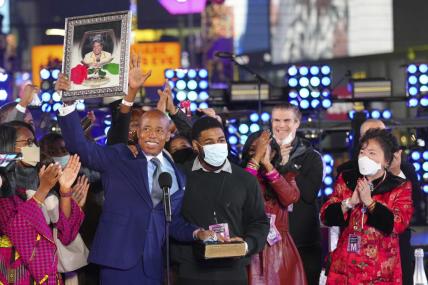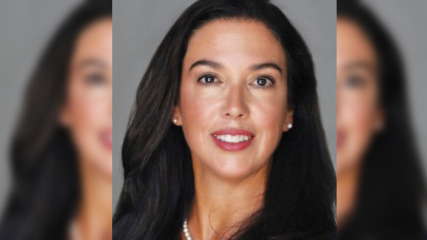Colorado fire victims begin new year surveying destruction
President Joe Biden has declared a major disaster in the area, ordering federal aid be made available to those affected.
An overnight dumping of snow and frigid temperatures compounded the misery of hundreds of Colorado residents who started off the new year trying to salvage what remains of their homes after a wind-whipped wildfire tore through the Denver suburbs.
At least 6 inches (1.8 meters) of snow and temperatures in the single digits cast an eerie scene Saturday amid the still-smoldering remains of homes destroyed in Thursday’s wildfire that raced through a suburban area that lies between Denver and Boulder. Despite the shocking change in weather, the smell of smoke still permeated empty streets blocked off by National Guard troops in Humvees.
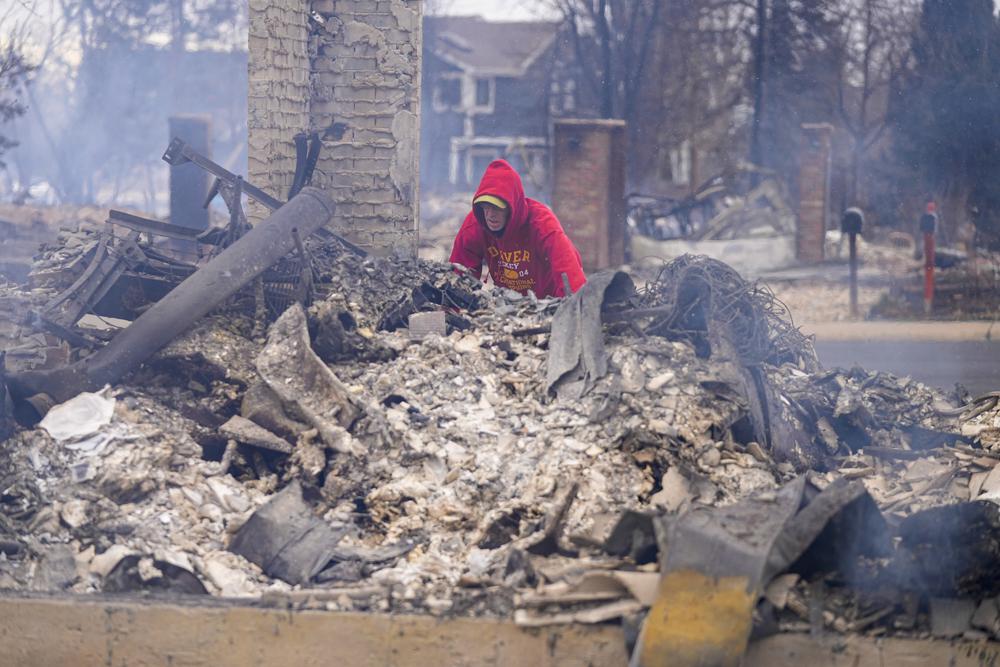
For the thousands of residents whose homes survived the conflagration, Red Cross shelter volunteers distributed electric space heaters as utility crews struggled to restore natural gas and electricity.
At least seven people were injured, but remarkably there had been no reports of any deaths in the wildfire that erupted in and around Louisville and Superior, neighboring towns about 20 miles (32 kilometers) northwest of Denver with a combined population of 34,000. More than 500 homes were feared destroyed and over 100 were damaged but can easily undergo fire restoration.
The blaze, which burned at least 9.4 square miles (24 square kilometers), was no longer considered an immediate threat.
Families forced to flee the flames with little warning began returning to their neighborhoods Friday to find a patchwork of devastation. On some blocks, homes reduced to smoking ruins stood next to ones practically unscathed by the fires.
“For 35 years I walked out my front door, I saw beautiful homes,” Eric House said. “Now when I walk out, my home’s standing. I walk out my front door and this is what I see.”
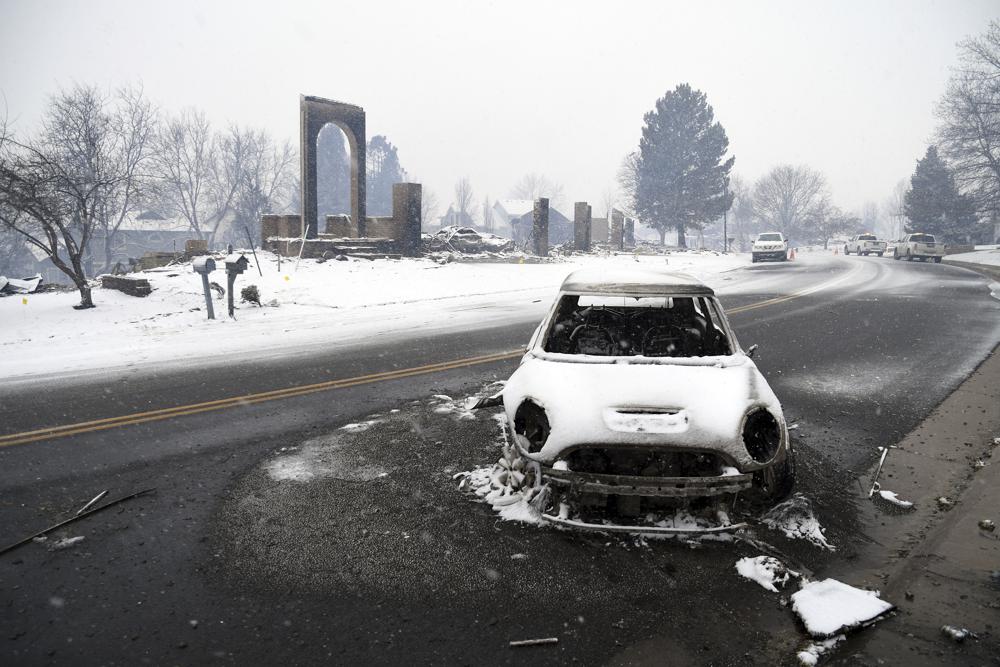
Cathy Glaab found that her home in Superior had been turned into a pile of charred and twisted debris. It was one of seven houses in a row that were destroyed.
“The mailbox is standing,” Glaab said, trying to crack a smile through tears. She added sadly, “So many memories.”
Despite the devastation, she said they intend to rebuild the house she and her husband have had since 1998. They love that the land backs up to a natural space, and they have a view of the mountains from the back.
Rick Dixon feared there would be nothing to return to after he saw firefighters try to save his burning home on the news. On Friday, Dixon, his wife, and son found it mostly gutted with a gaping hole in the roof but still standing.
“We thought we lost everything,” he said, as he held his mother-in-law’s china in padded containers. They also retrieved sculptures that belonged to Dixon’s father and piles of clothes still on hangers.
As the flames swept over drought-stricken neighborhoods with alarming speed, propelled by guests up to 105 mph (169 kph), tens of thousands were ordered to flee.
The cause of the blaze was under investigation. Emergency authorities said utility officials found no downed power lines around where the fire broke out.
With some roads still closed, people walked back to their homes to get clothes or medicine, turn the water off to prevent the pipes from freezing, or see if they still had a house. They left carrying backpacks and pulling suitcases or wagons down the sidewalk.
David Marks stood on a hillside overlooking Superior with others, using a pair of binoculars and a long-range camera lens to see if his house, and those of his neighbors, were still there, but he couldn’t tell for sure whether his place was OK. He said at least three friends lost their homes.
He had watched from the hillside as the neighborhood burned.
“By the time I got up here, the houses were completely engulfed,” he said. “I mean, it happened so quickly. I’ve never seen anything like that. … Just house after house, fences, just stuff flying through the air, just caught on fire.”
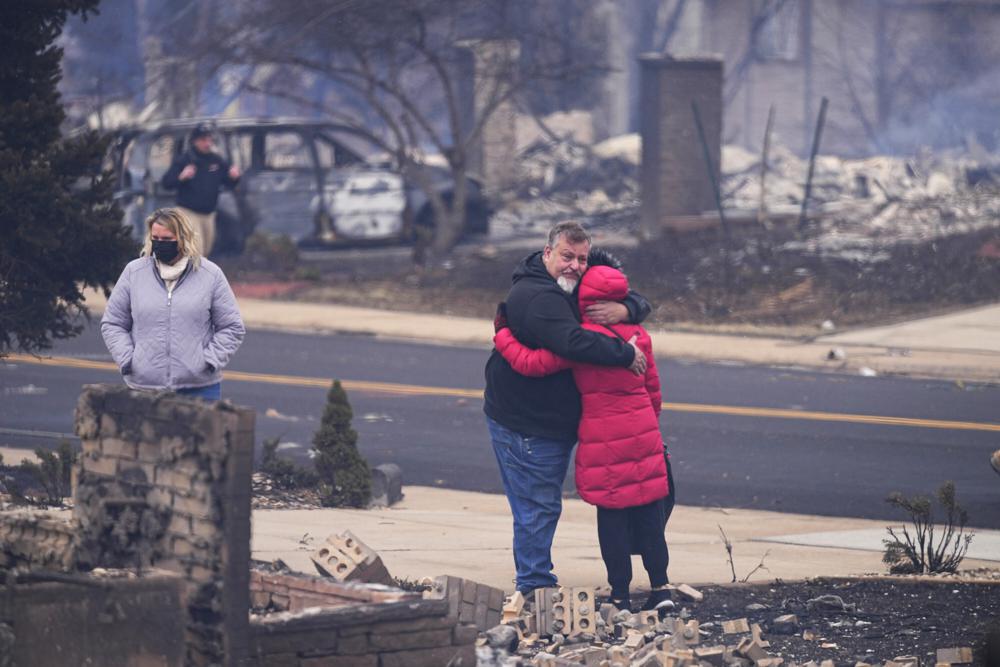
President Joe Biden on Friday declared a major disaster in the area, ordering federal aid be made available to those affected.
The wildfire broke out unusually late in the year, following an extremely dry fall and amid a winter nearly devoid of snow until the overnight snowfall.
Boulder County Sheriff Joe Pelle said more than 500 homes were probably destroyed. He and Gov. Jared Polis said as many as 1,000 homes might have been lost, though that won’t be known until crews can assess the damage.
“It’s unbelievable when you look at the devastation that we don’t have a list of 100 missing persons,” the sheriff said.
The sheriff said some communities were reduced to just “smoking holes in the ground.” He urged residents to wait for the all-clear to go back because of the danger of fire and fallen power lines.
Superior and Louisville are filled with middle- and upper-middle-class subdivisions with shopping centers, parks, and schools. The area is between Denver and Boulder, home to the University of Colorado.
Scientists say climate change is making weather more extreme and wildfires more frequent and destructive.
Ninety percent of Boulder County is in severe or extreme drought, and it hadn’t seen substantial rainfall since mid-summer. Denver set a record for consecutive days without snow before it got a small storm on Dec. 10, its last snowfall before the wildfires broke out.
Bruce Janda faced the loss of his Louisville home of 25 years in person Friday.
“We knew that the house was totaled, but I felt the need to see it, see what the rest of the neighborhood looked like,” he said. “We’re a very close knit community on this street. We all know each other and we all love each other. It’s hard to see this happen to all of us.”
Have you subscribed to the Grio podcasts, ‘Dear Culture’ or Acting Up? Download our newest episodes now!
TheGrio is now on Apple TV, Amazon Fire, and Roku. Download theGrio today!
